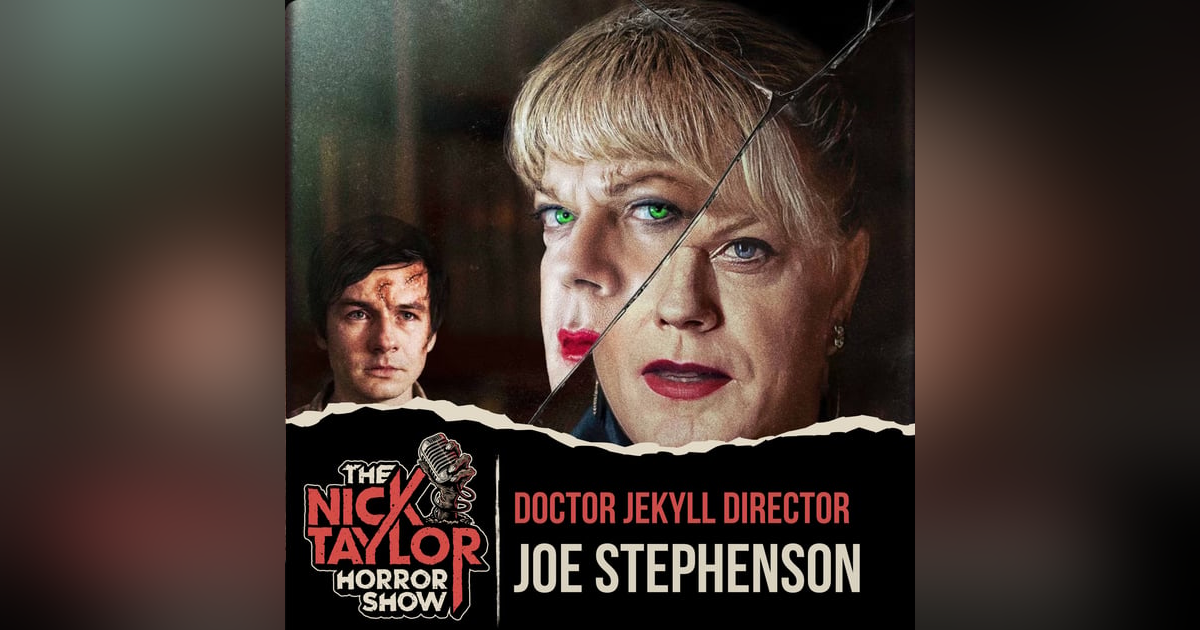DOCTOR JEKYLL Director Joe Stephenson (from Hammer Films)

Joe Stephenson is a British director who made his feature directorial debut with the 2015 film Chicken. His second film was the acclaimed 2018 documentary McKellen: Playing the Part about the life and career of Sir Ian McKellen. Joe’s third film is, Doctor Jekyll, an adaptation of Dr Jekyll and Mr. Hyde starring Eddie Izzard from Hammer Films.
In this episode, Joe and I delve into the process of reimagining a classic horror story with a modern twist, working with the legendary Eddie Izzard, as well as the past, present and future of Hammer Films. We also get into the many challenges of shooting on a tight budget, how to select locations when shooting in one location, and the hurdles Joe overcame, including epic storms and COVID-19.
Here are some key takeaways from this conversation with Joe Stephenson.
Improvisation Can be Magical
Joe’s approach to directing Doctor Jekyll focused on creating an environment where actors could infuse their own creativity into their performances, especially with the movie’s star, Eddie Izzard, whose improvisational skills added a unique energy to the character and film. Joe enabled improvisation by first having the actors perform the scenes exactly as they were written in the script, ensuring that they had a solid, reliable version in the can. Only after that was done did he encourage the actors to experiment with their lines and actions, exploring different ways of delivering the scene. This approach gave the film the best of both worlds: a faithful representation of the script and the discovery of new, spontaneous moments. This is a great approach, especially when working with megawatt talents like Eddie Izzard, who can bring more to the scene than is in the script.
Find Unique Locations
Joe wanted a location that hadn’t been overexposed in other films, and Stanford House near Rugby, UK, provided the perfect setting with its distinctive and untouched appearance, adding to the film’s uniquely creepy atmosphere. Shooting in a single location like Stanford House offered multiple benefits. The house's grand, eerie presence played a significant role in setting the film's tone and allowed for visual consistency. Joe also housed the actors on-site, which helped them immerse themselves even more deeply in their roles and the movie’s tone.
Directing is Problem Solving
The production of Doctor Jekyll faced numerous unforeseen challenges, from weather issues to the impact of COVID-19. Dealing with the unpredictable English weather forced the crew to constantly adjust their shooting schedule, including canceling a crane shoot due to a severe storm. COVID-19 added another layer of complexity. When the film’s gaffer tested positive, a replacement had to be brought in who hadn’t worked with the DOP before, disrupting the established workflow and adding stress to an already tight schedule. These challenges, coupled with budget constraints, meant the production was under constant pressure. However, Joe’s ability to stay calm and adaptive helped keep the film on track. As my guests have illustrated time and time again, most of filmmaking comes down to being adaptable and resilient, as things will inevitably go wrong, especially on low-budget movies.
SHOW NOTES
Movies:
- Doctor Jekyll
- Chicken
- Great Expectations
- Midas Man
Books/Novellas:
- Strange Case of Dr. Jekyll and Mr. Hyde by Robert Louis Stevenson
Follow Joe Stephenson at:
- Instagram: www.instagram.com/joestephenson/
- X (Twitter): http://www.twitter.com/JoeStephenson
- IMBd: https://www.imdb.com/name/nm3087240/







